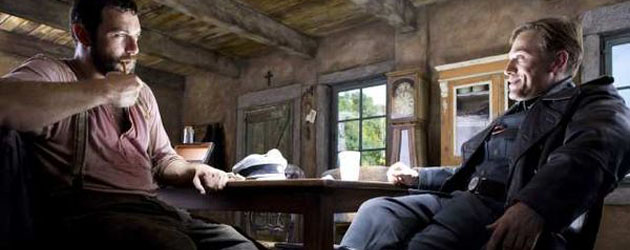David Wasco & Sandy Reynolds-Wasco

Monte Hellman was the original director of Reservoir Dogs and Quentin was going to produce it but when Harvey Keitel put his name on the project it boosted the budget and Monte was asked if he would not mind if Quentin directed it. And Quentin then took over directing while Monte remained on as the producer. We had been scouting with a Spanish cameraman Josep Civit who had just done a couple movies with Monte but Josep was tired and he just didn’t want to do a third movie straight in a row. This new cameraman was brought from Europe, Andrzej Sekula. I think this was his first job in America. He did Reservoir Dogs and Pulp Fiction and he came in with a new way of lighting and helped the art department create this whole colorful, bright, and harsh-lit look that then became a Quentin thing.
AS: Is Quentin a super-visual guy?
DW: Yes and no. He is an artist. He is a visual guy but not like Wes Anderson. Wes Anderson is to me a super visual guy. And I think I would say Michael Mann is a super visual guy. Quentin is more concerned with the geography of a set that would allow his actors to move around and have enough space to be able to say a line before they can reach a door and exit. In contrast, Wes would be ultra-concerned with, for example, the shade of the color of the wall. And we would change that color a few times. For instance in Royal Tenenbaums it was anguish to get to the final pink inside the house. The minutiae of the props were also anguished over by Wes. Quentin is equally concerned about props but, in true B-Movie mode, he has mentioned that cardboard backdrops would be enough for him in most situations.
SRW: Quentin loves the characters and his are definitely character-driven stories. He’s not so interested in specific art direction. As long as it has some grand elements that will allow his camera to move in a certain way and his actors to move in a certain way as they speak, he’s content.
As guides for us, both in the script and in conversation, he will reference a lot of films and TV shows with set details or camera moves that he likes. He’ll say, Okay, we need this space but we need the staircase from this movie and we need this vista from this other movie…
Wes on the other hand specifies sets that often describe the character, add to their backstories, give texture to the scene. His actors appear in a space and the space itself talks to the audience, adds to their personalities and the tone of the story. His ideas really helped us create some beautiful environments in Tenenbaums.
But whereas Wes’ interaction with actors seems more restrained, Quentin’s very garrulous and likes working with the actors.
Thank you for publishing such a great, in-depth interview with The Wasco’s! – it really captures how wonderful and talented they are, and their love and respect for cinema and architecture. And I really enjoy your blog in general – what a cool resource of ongoing conversations! Keep it up!
Robert Foulkes/Location Manager
I agree with Robert. I’ve read every single one of your interviews and everyone offers such great advice. Inglorious Bastards was such a great film and to hear their story makes it even better. I’m on the distribution and sales side of the business, but my passion has always been designing and art, so to read these stories is truly inspiring.
Thank you!!!